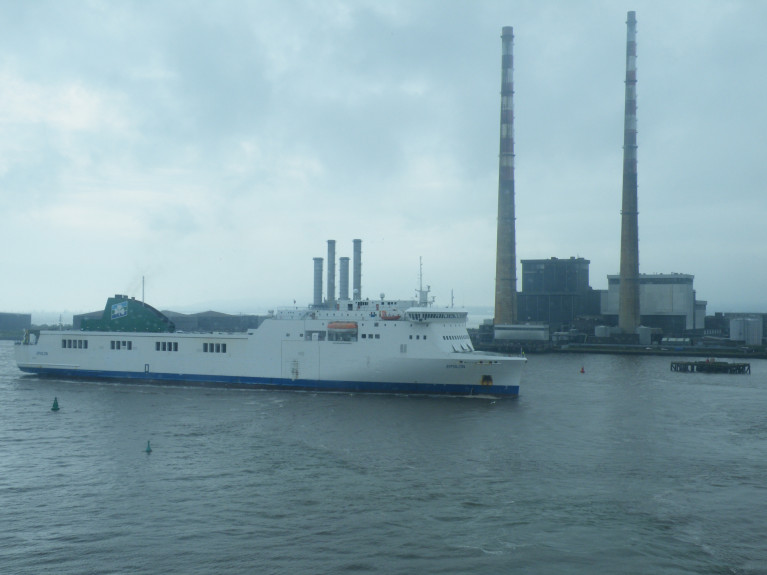Displaying items by tag: 2nd ship added
Irish Ferries Face Competitor By Boosting Freight Capacity With Second Ship on Dublin-Cherbourg Service
Irish Ferries have further responded to demands from hauliers and new competition from Stena by boosting freight capacity with a second ferry added onto the Dublin-Cherbourg service this weekend, writes Jehan Ashmore.
Afloat ascertained this development having observed the chartered ro-pax Epilson (170 freight units) depart Dublin Port on Friday afternoon with an outbound sailing to the mainland European port. It transpires based from the operator's freight website that the sailing took place earlier than scheduled due to the adverse weather conditions on the Irish Sea (see related story).
Further research revealed that Epsilon's sailing schedule on the direct Ireland-France involves a single round trip at the weekends. Whereas, during week-days the ropax resumes routine crossings on the Dublin-Holyhead service in tandem with the cruiseferry Ulysses.
Noting that the ferry sector is a constantly evolving scene given Brexit etc and so further changes in flexibilty of schedules can easily be expected. This can be due to operational reasons and market demand.
As for the present, Epsilon this morning is making its inbound sailing to Dublin Port (due 12.00) from where yesterday evening Afloat also observed the route's other ship, the cruiseferry W.B. Yeats (165 freight units) depart in the reverse direction. Also this morning, this ferry is nearing completion of the crossing to the north France port in Normandy.
The move by Irish Ferries is set against the backdrop of rivals, Stena Line which made a first entry on to the Ireland-France route this month. This new service is operated by Stena Estrid, which likewise of Irish Ferries, makes a single round trip at weekends before returning to weekday based Dublin-Holyhead sailings joining Stena Adventurer.
This is about to change as next week Stena Line is to withdraw Stena Estrid from the Ireland-Wales service and onto the Irish capital-continental route and therefore increase sailings and capacity. In addition, the smaller capacity Stena Horizon is to take 'Estrid's place by transferring to the Dublin-Holyhead route having operated Rosslare-Cherbourg service (see: newcomer Brittany Ferries) also run by ro-ro freighter Stena Foreteller.
As reported earlier this month the transfer of W.B Yeats from Dublin-Holyhead to the Ireland-France route took place more than four months in advance than scheduled. This in response to the rapid surge demanded by hauliers wanting to avoid the UK land-bridge and resultant complications of customs clearance of a post-Brexit UK.
W.B. Yeats at more than 50,000 gross tonnage is the largest ferry operating out of Ireland but due to heavy seas the ferry took a 'weather route' which involved departing Dublin Bay via the Baily Lighthouse and onward to the Kish Lighthouse and further offshore to deeper waters.
Otherwise in more favourable weather, the ferry heads south out of Dublin Bay via the Muglins Lighthouse and along off the east coast sandbanks until around off Wicklow Head. From these waters the course veers further offshore and towards the centre of the St. Georges Channel.
With Stena adding to Irish Ferries services on the Dublin-Cherbourg route, they follow the original pioneer on the direct route first launched by P&O Ferries in 2003 using the ro pax European Ambassador. On occasions subject to freight traffic demands, the ro pax would make en route calls to Rosslare Europort but on the majority of occasions this involved an arrival from France.
In the second year of service, P&O opened the route up to 'foot' passengers which was welcomed and also on a personal basis having taken the inaugural crossing on this direct and convenient connection to the continent.





























































